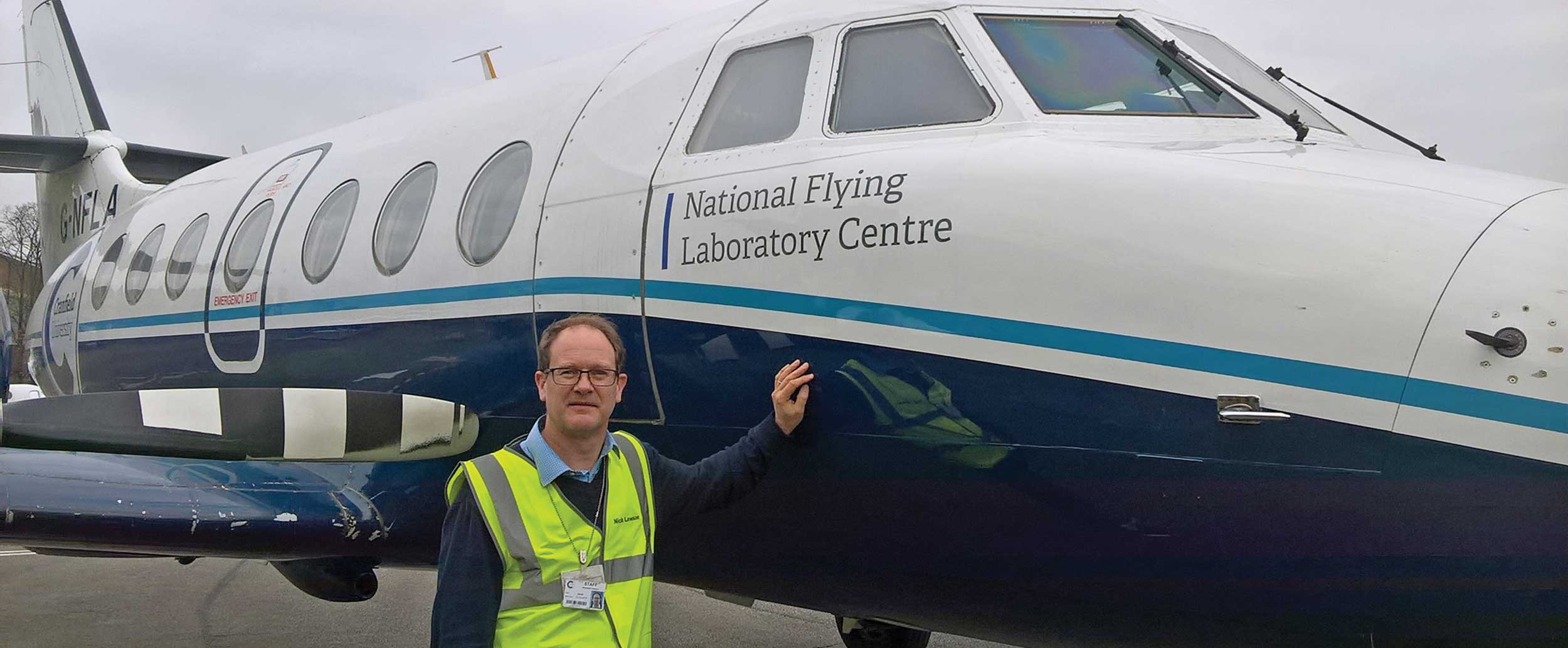 I Get Paid for This…
I Get Paid for This…
This article first appeared in FLYER in March 2019
A professor whose work, apart from research and teaching, includes doing sustained 2G 60° banks in a Jetstream, aka the flying laboratory…
Interview by Yayeri van Baarsen
How did you get into flying?
The interest has always been there. I was brought up in Africa in the 1970s and every few years we’d fly back to the UK.
During those flights me and my dad, an ex-RAF pilot, often visited the cockpit. After moving to the UK he took me to airshows, and by the time I was 15, I was building and flying radio-controlled models.
However, I didn’t get into flying until I moved to the Cranfield Campus in 2004.
My office was located right next to the university’s airfield, and because I’d always been fascinated with aviation, I took a trial lesson. I soon realised it was what I wanted to do – flying an aircraft felt natural.
Tell us about your job…
I’m Head of Department at the National Flying Laboratory Centre. My work consists of academic duties, such as teaching about aerodynamics and flight dynamics; research; managing duties and, of course, flying. I really like the variety – one day I’m in the air, the next I’m lecturing or meeting up with students.
Currently, I’m conducting research for Airbus, measuring wing shape and wing strain with fibre optic sensors; and with Rolls-Royce, measuring vibrations and strain, again with fibre optics.
In the future, aircraft design will allow more flexible structures, so it’s important to be able to measure and monitor those parameters.
I usually spend about one day a week flying. The Slingsby and the Bulldog are for one-to-one lessons, where we teach general flying, aerobatics and also let students take the controls.
The Jetstream is our flying laboratory – the students sit in the back and record data from the screen while we test basic aerodynamics and aircraft stability.
We take around 1,600 students up each year and the majority of them really enjoy it but some get a bit airsick. Having a physical flight experience makes learning more exciting than just processing data.
What I particularly like about my job is that it includes a lot of manual flying – I get to properly fly the aircraft. One of the tests we do is a wind-up turn, which is a sustained 2G 60˚ bank to look at manoeuvre stability.
It’s one of the more difficult manoeuvres, as you constantly have to maintain the same airspeed and G-level while descending, but it’s one of my favourites. The Jetstream isn’t particularly easy to fly, a lot of trimming is required to do so accurately, but it handles and turns very well. I enjoy the physical control aspect the most.
What training did you have?
Looking for a career change from academia, I obtained a PPL and CPL in my spare time.
Having applied for a job with an airline, I was about to have an interview when a colleague at the Flying Laboratory mentioned that he was short of pilots.
In 2007 I joined the Flying Laboratory, did a type rating on the Jetstream and was trained internally by my old boss, an ex-military test pilot.
All of our pilots are also aerobatic instructors who trained on the job – we regularly fly 10-15 different manoeuvres and after performing them hundreds of times a year, you get pretty good.
What’s been your favourite flight?
Every March, we fly around Scotland for a few days with students from Glasgow University. We take the Jetstream up to 7,000-8,000ft, which still allows you to see the stunning scenery.
I like it that the Glasgow area’s weather can change so quickly – one day you’ve sunshine with views of the snowcapped mountains, the next you’re doing an instrument approach in bad weather – those extremes test all of your training.
And your favourite airfield?
Southampton. The approach over the harbour into one of the runways is lovely and the views over the Isle of Wight are really nice on take-off.
Also, it’s very well-managed, with good ATC and helpful handling.
Do you get to fly much outside work?
Not often – I did maybe 10 hours last year. I’m piloting light aircraft and the Jetstream at work so don’t feel the desire to fly on weekends.
What’s the most valuable career advice you’ve received?
To try different things in your job. Variety is key and exploring other areas of aviation, such as aerobatics, getting a night rating or flying different aircraft types, keeps you interested.
I think if I’d become an airline captain, doing the same kind of flying every day, I wouldn’t have been particularly happy.
Flying CV
Nigel Lawson is a Professor of Aerodynamics and Airborne Measurement and head of the National Flying Laboratory Centre at Cranfield University.
Started 2007
Now flying BAE Systems Jetstream 31, Slingsby T6M260, Scottish Aviation Bulldog
Favourite Bulldog
Hours at job start 250
Hours now 2,500
